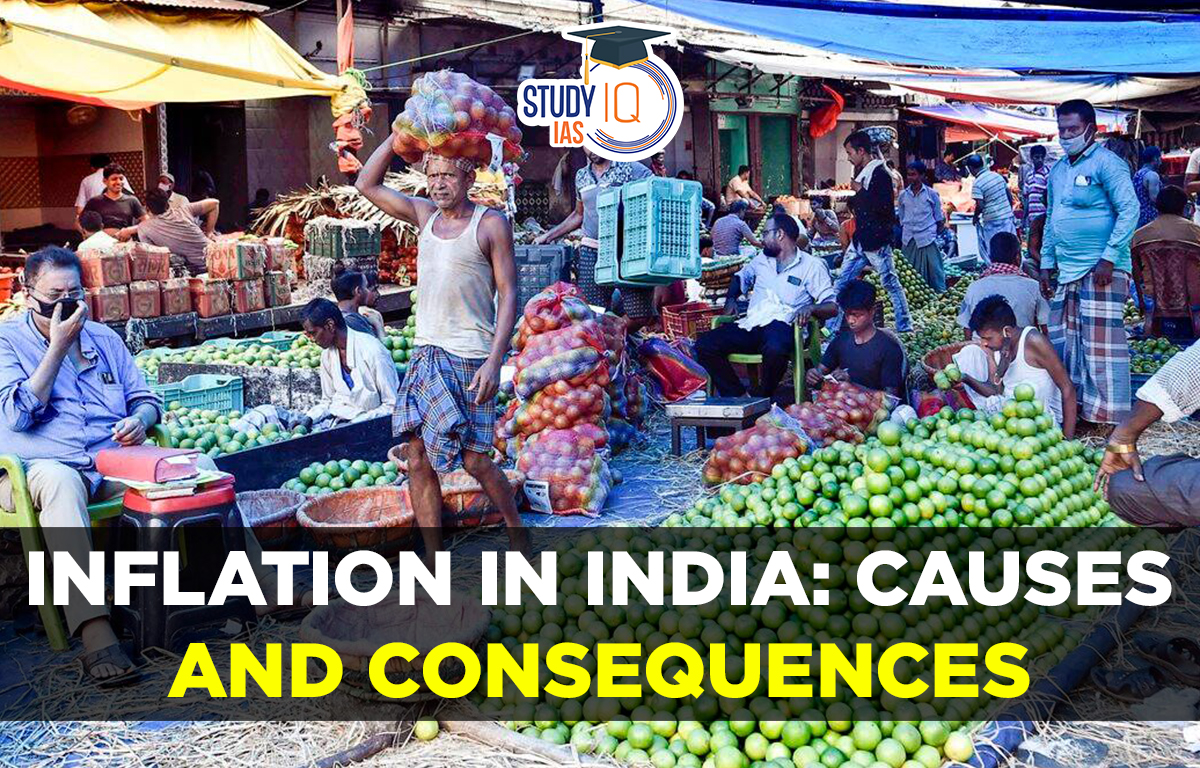Table of Contents
Context: According to data released by the National Statistical Office (NSO), retail inflation increased to 6.5% in January 2023.
About Retail Inflation
- It is measured by the consumer price index (CPI). The change in the price index over a period of time is referred to as CPI-based inflation, or retail inflation.
- CPI measures retail inflation by collecting data on the prices of goods and services that are consumed by the retail population of the country.
- The CPI monitors retail prices at a certain level for a particular commodity; price movement of goods and services at rural, urban and all-India levels.
- Among the major States, Telangana recorded the highest inflation in January at 8.6%, followed by Andhra Pradesh (8.25%), Madhya Pradesh (8.13%), Uttar Pradesh (7.45%) and Haryana (7.05%).
Causes for Spike in Inflation
- Higher Food Inflation: Consumer food prices increased to 5.94% from 4.2% in December 2022.
- Cereals inflation surged from 13.8% in December to 16.1%;
- Milk products accelerated from 8.5% in the previous month to 8.8%;
- Spices jumped from 20.3% inflation to 21.1% in January.
- Inflation in eggs sped from 6.9% in December to 8.8% in January, while the pace of price rise in meat and fish rose from 5.1% to 6.04%.
- Core inflation: It has increased to 6.2% in January from 6.1% in December.
- It is a measure of inflation arrived at by removing the prices of food and fuel.
CPI and Repo Rate
- CPI is an essential tool for RBI as it looks after the monetary policies of the country.
- The framework by RBI requires it to keep the inflation rate around 4% however it can fluctuate anywhere between 2% and 6%.
- The primary motive of RBI is inflation control, while it may change from time to time depending on the decision of the monetary policy committee.
Impact of Increase in Inflation
- Increase in Repo Rate: Reserve Bank of India (RBI) in February 2023 Monetary Policy meeting raised the repo rate by 25 basis points (bps) to 6.5 per cent in its fight against inflation.
- RBI raises the repo rate when it believes that inflation is not in control.
- Higher interest rates drag down overall demand for goods and services by making loans costlier. Lower demand is expected to cool down inflation.
- If inflation stays persistently high (‘sticky’), it would necessitate the RBI to keep raising interest rates
Sticky Inflation
- Inflation being sticky essentially means that inflation is taking longer than expected to fall.
- Higher food and fuel prices have spiralling impact on the broader economy and made other things costlier.
- However, India is not the only country facing sticky inflation.
- Many other countries such as the US and countries in the euro zone — are also struggling to come out from sticky inflation.
CPI vs. WPI



 Phone-tapping in India, Legal Framework ...
Phone-tapping in India, Legal Framework ...
 Bihar Assembly Election 2025 Dates, Poli...
Bihar Assembly Election 2025 Dates, Poli...
 Jharkhand High Court Assistants Admit Ca...
Jharkhand High Court Assistants Admit Ca...





















